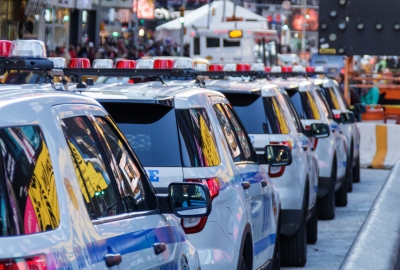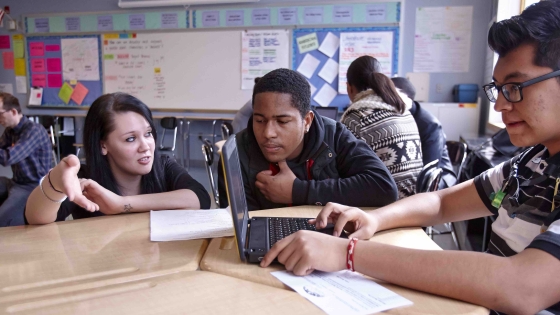
Examining the Consequences of Heavy Neighborhood Policing for Students' Test Scores and Graduation Rates in New York City
By Joscha Legewie and Chelsea Farley (September 2022)
In 2019, the Research Alliance published a policy brief that highlighted a startling connection between NYC students’ academic performance and their exposure to policing in their home neighborhoods. Focusing on a period when Stop, Question & Frisk was in widespread use in New York City, the study found a modest decrease in violent crime as a result of local police “surges”—this might have been expected to improve the educational performance of students living in those areas. Instead, we found the opposite: Particularly for middle school aged Black boys, police surges had a notable negative effect on their state ELA and math test scores.
These findings raised important questions about how heavy neighborhood policing might affect students’ longer-term educational trajectories. Our new study uses data on more than 230,000 NYC students to examine the effects of neighborhood policing on high school graduation rates. We followed five cohorts of students for eight years each, from 2005 (when the first cohort started middle school) through 2018 (a year after the last cohort’s scheduled high school graduation).
During this period in New York City, the use of Stop, Question and Frisk peaked, in 2011, and then declined rapidly. As a result, early cohorts in our sample grew up in neighborhoods with significantly more police stops, compared to later cohorts. We found that while the overall level of policing fell over time, racial disparities persisted. Year after year, Black students lived in neighborhoods with about three times the average number of police stops, compared to White students.
Importantly, our findings also show that when there was heavy Stop, Question, and Frisk activity in Black and Latinx students' home neighborhoods, they were substantially less likely to graduate from high school. These analyses control for a range of other factors that could have influenced students’ outcomes, including local crime rates. Black students who lived in neighborhoods with very high levels of policing were about 8 percentage points less likely to graduate than those who experienced very low levels of policing. For Latinx students, the pattern was similar, though less pronounced.
Recent increases in gun violence have led to concerns about public safety and calls for more intensive law enforcement. Understanding how students’ educational trajectories are affected by policing—not necessarily because they have interactions with law enforcement, but the sheer fact of living in a heavily policed neighborhood—is crucial for making informed decisions. Our findings highlight the need for policymakers to consider the full costs of heavy policing in communities; to think carefully about the role of police officers in schools; and to recognize that achieving equity in education will require reforms in the other systems and institutions that shape young people’s lives. As outlined in the brief, the findings also have implications for schools and how they might support students who experience heavy policing in their home neighborhoods.
Reflections on the Study
At a critical time, these findings confirm what we have known far too long: community conditions that perpetuate trauma, like over policing, lead to consistently lower educational outcomes, even without direct contact with law enforcement. FPWA commends the Research Alliance for New York City Schools for examining these connections and shining a light on the ways to dismantle structural barriers that impede true equity for all New Yorkers.
- Jennifer Jones Austin, CEO and Executive Director, FPWA

